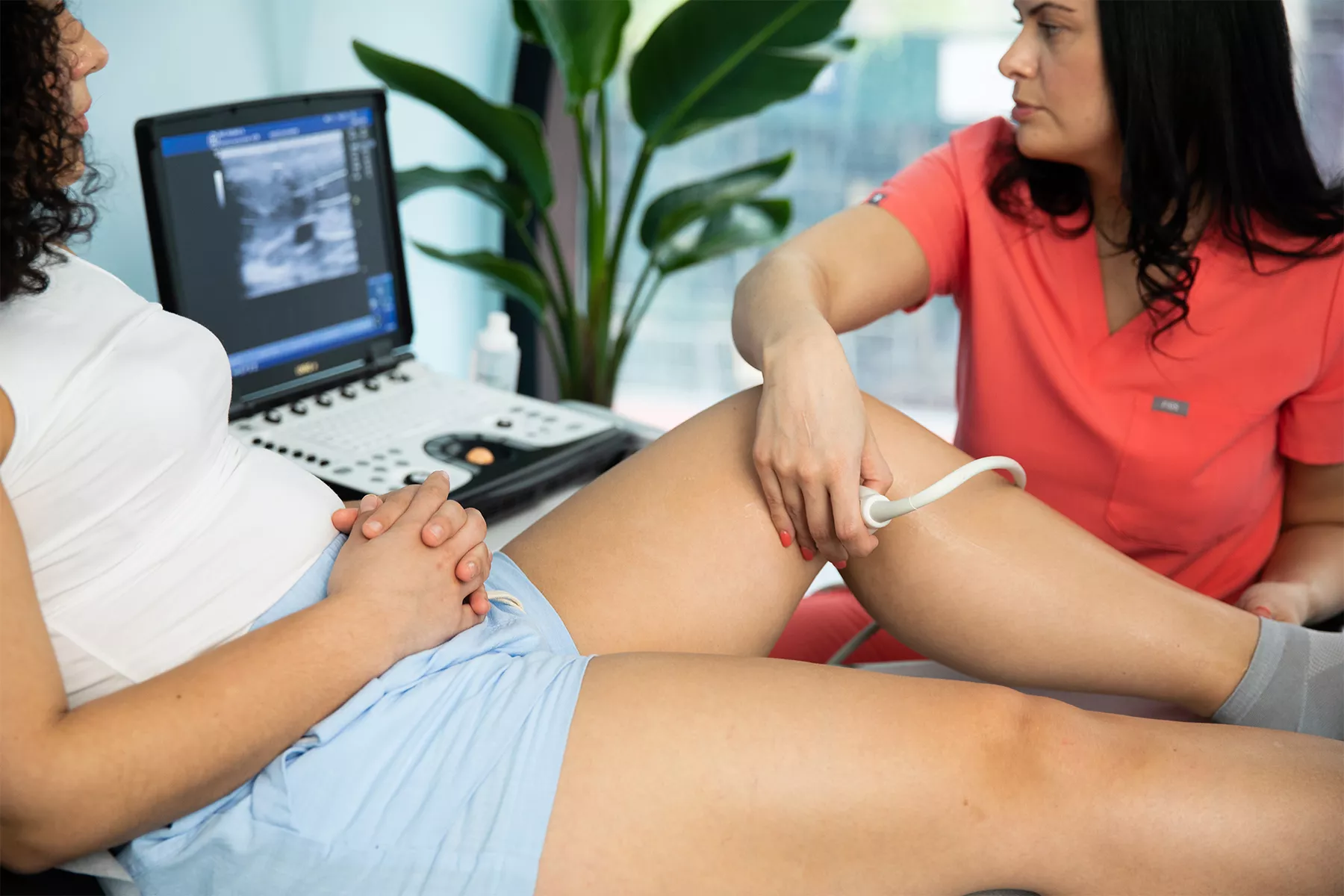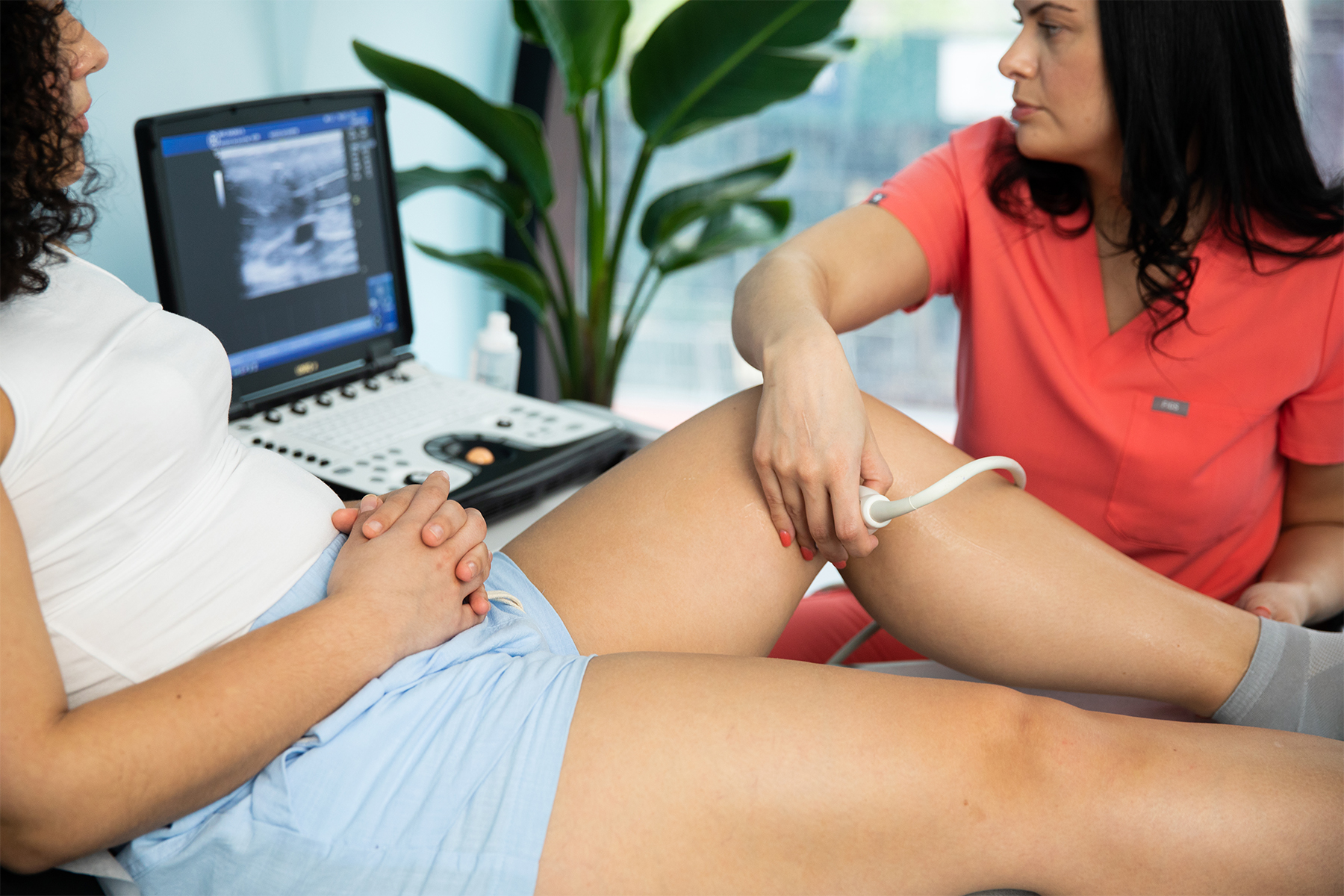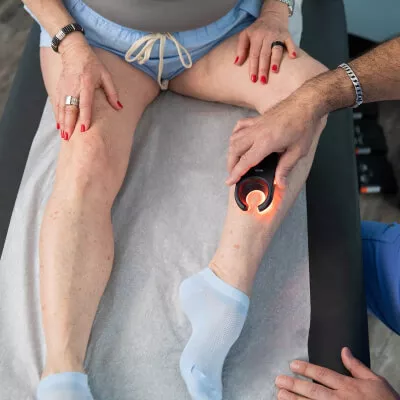Leg vein diseases, such as varicose veins, chronic venous insufficiency, and deep vein thrombosis, impact the lives of over 30 million adults in the United States. Early and accurate diagnosis plays a crucial role in managing and treating these conditions effectively. With timely diagnostic procedures for leg vein disease, many leg vein diseases are not only treatable but also potentially reversible.
Many vascular health conditions often start with mild or subtle symptoms, making them easy to overlook. However, without early intervention, leg vein diseases can progress, leading to more severe complications that may become difficult or even impossible to reverse. Keep reading to discover the importance of diagnostic tools and methods for identifying leg vein diseases early.
Non-Invasive Diagnostic Tests for Vein Disease
Non-invasive diagnostic tests for vein disease are painless, require no recovery time, and typically have a low risk of complications. They include duplex ultrasound, air plethysmography, and a physical exam, which are all relatively quick and easy to perform.
Duplex Ultrasound
A duplex ultrasound creates images of the leg's structures by using a handheld transducer that emits sound waves. These waves bounce off tissues and blood cells, translating into an image. This test is valuable for detecting blood clots, assessing vein function and blood flow, examining varicose veins, and diagnosing vein disease.
Continuous-Wave Doppler
A continuous-wave Doppler (CW Doppler) measures high-velocity blood flow using sound waves. This allows the vein specialist to assess blood flow through the arteries, primarily in patients with suspected peripheral artery disease (PAD) or blood clots.
The main limitation of using a CW Doppler is its inability to accurately pinpoint where an abnormality occurs.
Air Plethysmography and Photoplethysmography
These two painless, non-invasive procedures can be used to evaluate blood flow and diagnose leg vein disease.
- Air plethysmography (APG): APG measures blood flow changes in the leg using a pressure cuff and a special machine called a plethysmography.
- Photoplethysmography: Assesses the blood volume changes through the circulatory system using a small probe emitting infrared light.
Physical Exam
A vein care specialist will perform a visual examination of any affected areas, looking for signs of vein disease, such as skin discoloration, swelling, ulcers, or varicose veins.

Minimally Invasive Diagnostic Tests for Vein Disease
Minimally-invasive diagnostic vein tests are usually more involved than non-invasive tests but they also have a minimal impact on the body. Leg vein specialists use minimally invasive diagnostics to view the vein's anatomy and assess blood flow. This helps them identify abnormalities such as blood clots or damaged vein valves.
Common minimally invasive diagnostics include venography, CT venography, and magnetic resonance venography (MRV).
Venography
Venography is a standard imaging procedure that utilizes X-rays and contrast dye to assess the inside of a vein. There are two versions of this test: ascending and descending.
- Ascending venography observes how the contrast dye flows upward from the foot. This is useful in diagnosing conditions like deep vein thrombosis or finding its location.
- Descending venography observes the downward flow of contrast to check for signs of valve insufficiency.
CT Venography
Like traditional venography, CT venography looks for abnormal changes in leg veins, such as blood clots or faulty valves. However, this version is more advanced, using computer tomography instead of X-ray to create a 3D view of the veins. CT venography is best used to determine the extent of a blood clot or damaged valve.
Magnetic Resonance Venography (MRV)
Magnetic resonance venography (MRV) is a non-radiated imaging technique that utilizes magnetic resonance over an X-ray or CT scan to evaluate venous blood flow. It is ideally used when the leg is damaged or deformed or the patient is obese. It also provides a more detailed image of the iliac veins.
Specialized Diagnostic Tests for Vein Disorders
Patients with diagnosed leg vein abnormalities may undergo specialized diagnostic tests when more information is needed after the completion of less invasive procedures. These tests help vein specialists determine the type of vein disorders like chronic venous insufficiency (CVI) and plan and guide treatments. They include:
Ambulatory Venous Pressure Measurement (AVPM)
AVPM is the historical gold standard for assessing calf pump function of chronic venous insufficiency. This test measures blood flow in the leg during activity and identifies abnormal venous pressure. Although it is the gold standard, it can potentially display inaccurate results due to patient movement and instances of mild disease.
Intravascular Ultrasound (IVUS)
During an intravascular ultrasound, the specialist inserts a catheter-sized ultrasound probe into the vein to obtain a detailed image of the vein interior. This test guides stent placement and identifies the narrowing or thickening of blood vessels.
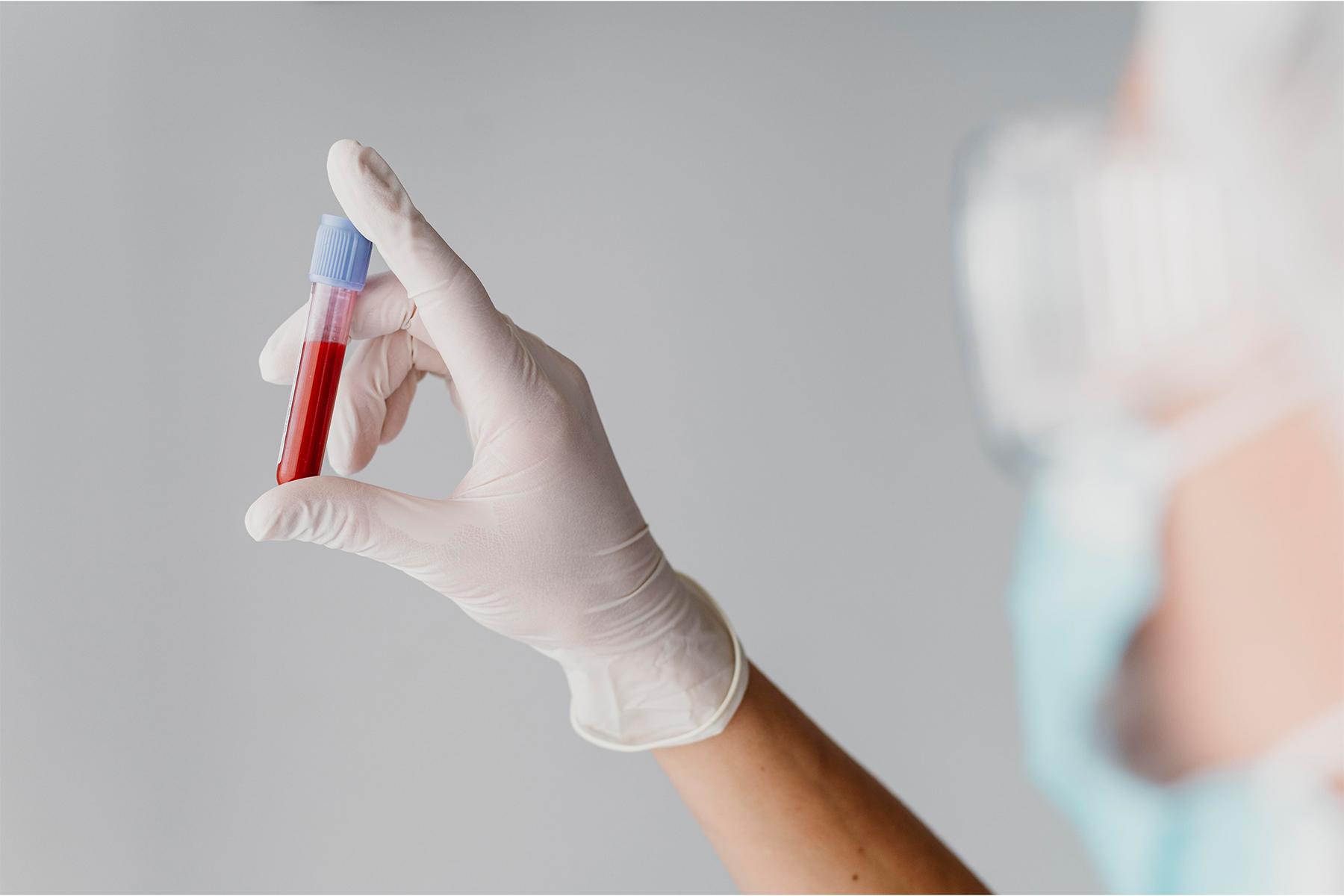
Blood Tests for Vein Disease
Laboratory blood tests help to diagnose vein diseases and their severity, determine whether the disorders are caused by a genetic mutation, and identify blood clots.
Blood clots are the leading cause of leg vein disorders. Some clots arise due to inactivity, while others affect genetically predisposed individuals regardless of their activity level.
The most commonly used laboratory test is D-dimer. The D-dimer blood test checks for blood clotting issues by measuring the D-dimer level. Results from this test can help the specialist determine the best course of treatment in cases of deep vein thrombosis or when a patient is at high risk of developing one.
How to Choose the Right Diagnostic Procedure
A vein specialist carefully selects diagnostic tests based on several factors, including your symptoms, medical history, and the suspected vein condition. Physical examinations often serve as the first step, providing an initial assessment of your leg and vein health. Depending on the findings, your doctor may recommend specific tests such as ultrasounds, blood tests, or X-rays.
In some cases, a single test may not provide enough information for an accurate diagnosis. When this happens, specialists often combine multiple tests to ensure a more comprehensive evaluation.
Advances in Vein Disease Diagnostic
The science of leg vein disorders is evolving with the emergence of new diagnostic technologies, such as near-infrared spectroscopy and optical coherence tomography. These non-invasive tests offer detailed insights into the leg's anatomy, surrounding tissues, and muscles.
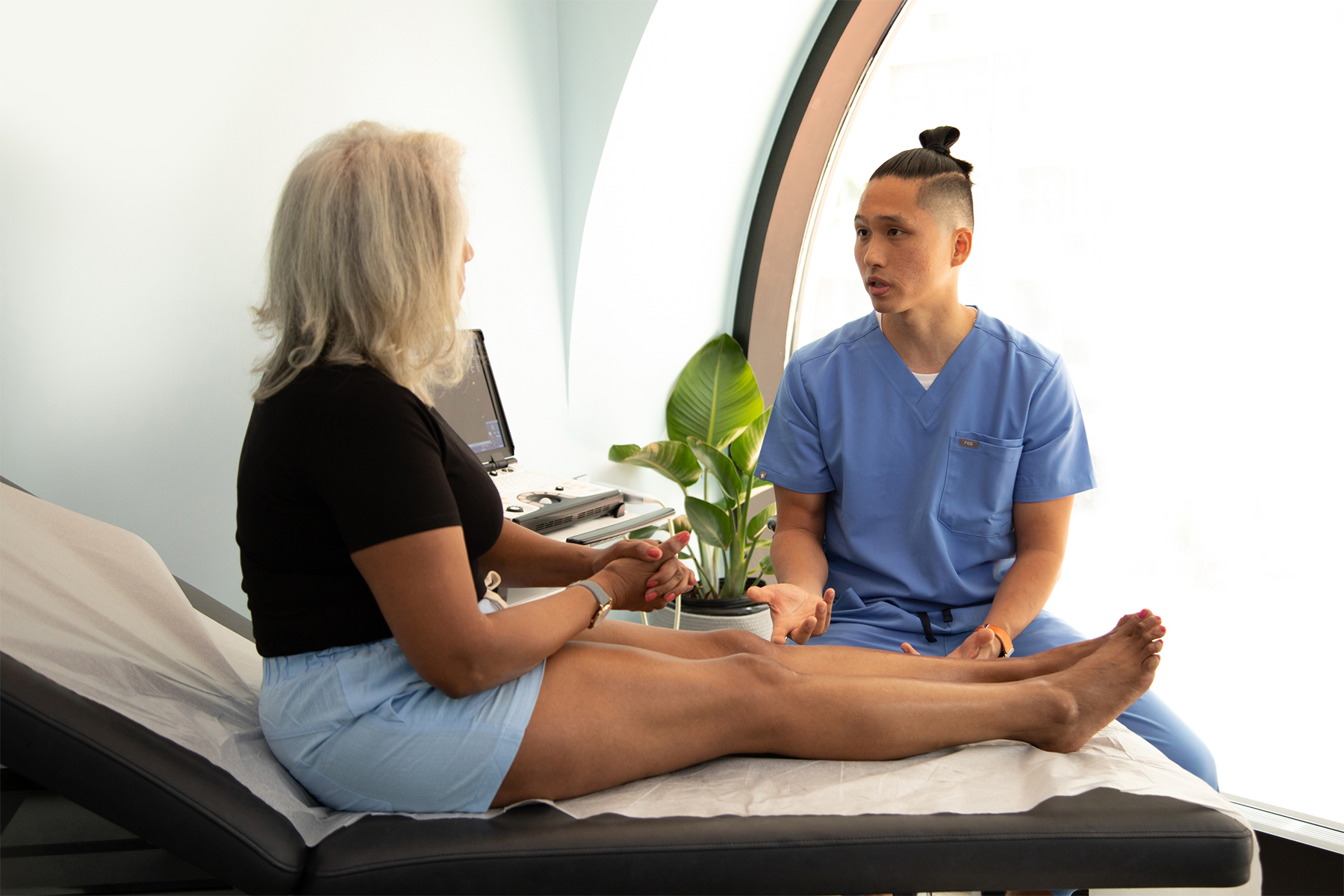
How to Prepare for a Vein Diagnostic Procedure
Knowing what to expect during your vein assessment and any diagnostic procedures can help ease any uncertainty and ensure a smooth experience. From initial preparation to imaging and the discussion of the results, understanding each step allows you to feel more confident and informed. Before attending your appointment, make sure to:
- Wear loose-fitting clothing
- Remove all jewelry
- Eat a light meal
- Make sure you're adequately hydrated
- Let the specialist know if you're on a blood thinner
Here's a quick summary of what happens during your first vein diagnostic procedure:
- Preparation: The technician will apply gel to your skin to help the transducer glide smoothly over it.
- Imaging: The transducer captures clear images of your veins on a monitor. Though it may look intimidating, it applies only gentle pressure and shouldn't cause pain.
- Results discussion: The technician won't discuss findings with you; your doctor will review and explain the results afterward.
Receiving Diagnostic Results
After your leg vein diagnostic procedure, the specialist will review the results with you, as they can be complex. It's best to wait for your follow-up to discuss these findings in detail.
Once a diagnosis is provided, the specialist will outline a vein treatment plan that may include lifestyle changes, medications, or medical procedures. Following this plan is essential to prevent your vein issues from worsening.
When You Should Seek a Second Opinion
Most diagnostics are straightforward. However, there are a few situations in which you might want to seek a second opinion.
They include cases where:
- More than one leg vein disease is suspected
- You have abnormalities in your leg vein anatomy
- Your diagnosis requires invasive treatment
- Your test results are inconclusive
Conclusion
Research on leg vein disease is advancing, but one principle remains unchanged: regular exercise, a healthy diet, and leg movement are key to preventing certain leg vein diseases.
Concerned about your leg vein health? Schedule a free diagnostic evaluation with our expert vein specialists today.

Dr. Philip LoPresti
Meet Dr. Philip LoPresti DO, DABVLM, FACS, a board-certified vein specialist and surgeon with over 20 years of experience. Schedule an appointment with him in Queens, NY today.
Meet Dr. Philip LoPresti
Trusted insight from the nationally accredited, board-certified vein doctors at Metro Vein Centers.


